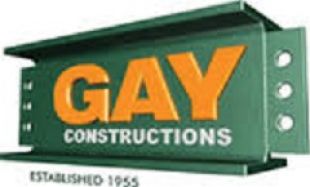Gay Constructions Pty Ltd

Management commitment: The key to safety and business improvement
The Injury Prevention and Management program (IPaM) works with businesses to develop better work health, safety and injury management systems.
Gay Constructions Pty Ltd is a steel manufacturer operating out of a facility in Brisbane and is involved in commercial, industrial, defence, mining and infrastructure projects.
The company was invited to participate in IPaM in 2011 after experiencing a high number of workers' compensation claims. Prior to engaging with IPaM, Gay Constructions' senior management had a firm commitment to making significant changes across the company to improve production, quality and safety.
Safety review process
With IPaM, Gay Constructions reviewed its safety and injury management systems and surveyed employees about safety in the workplace.
The company then worked with an IPaM advisor to develop an action plan that included a number of safety and injury management initiatives, including:
- establishing and measuring positive safety performance indicators
- improving the incident investigation process
- training staff on the use of personal protective equipment
- focusing on identifying and controlling manual task risks
- improving consultation with workers through the safety committee and toolbox meetings.
New safety initiatives
Gay Constructions implemented three major new safety initiatives as a priority.
- Immediately report safety incidents to the general manager. To demonstrate that the safety of all staff was important, immediate incident reporting was introduced. Regardless of the time or day, supervisors are required to notify the general manager of any safety incident. As a business that operates at night and on weekends, it took managers and supervisors time to adapt to reporting incidents outside of normal business hours. However, it is now standard practice and sends a clear message that safety is a top priority.
- Staff are accountable for meeting their safety responsibilities. Staff, supervisors and managers all had safety responsibilities, but were not made accountable for meeting these responsibilities. After consulting with staff about their safety responsibilities, managers challenged non-compliance by enforcing safety procedures. In some cases, this led to performance management and termination of staff and supervisors who repeatedly failed to comply with safety procedures. Gay Constructions continues to address the attitudes and behaviours of workers to ensure safety coupled with high quality work.
- Measure safety performance using both 'lag' and 'lead' indicators. The company traditionally measured safety performance using 'lag' indicators, such as lost time injury (LTI) frequency. Gay Constructions introduced 'lead' safety indicators to try and identify safety system failures. The company found that lead indicators helped identify failures in the safety system earlier, giving them an opportunity to fix issues before incidents could occur. Several safety activities are now measured, including:
- the number of scheduled tool box talks conducted
- the number of scheduled safety inspections completed
- the timeliness of safety incidents and hazards being reported and acted on.
Benefits
These initiatives, in combination with other safety and injury management improvements, have started to pay off for Gay Constructions. Over the past four years it has experienced an 80 per cent reduction in workers' compensation claims and dropped from 22 LTIs to 12. It has also achieved more than 500 days LTI free. This has resulted in cost savings to the business, along with other benefits including:
- improved staff productivity
- accreditation for the safety system
- successfully tendering for, and winning, more contracts.
More information
This case study highlights cost effective and achievable steps that employers can implement to prevent workplace injuries while improving injury management outcomes.
For more information about injury prevention and management, and resources to improve your business's injury prevention and management systems:
- call us on 1300 362 128
- visit the Injury prevention and management program (IPAM).